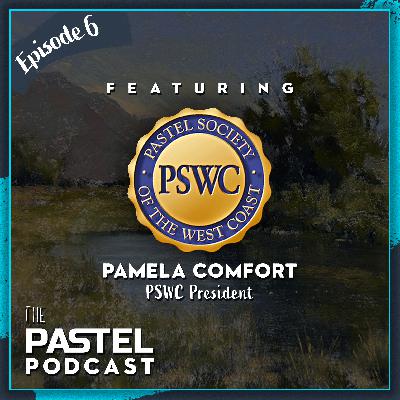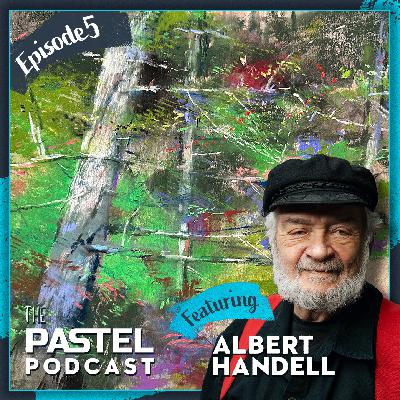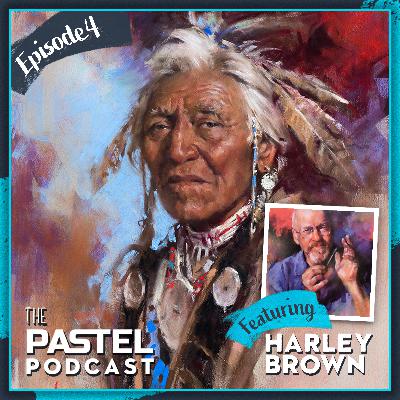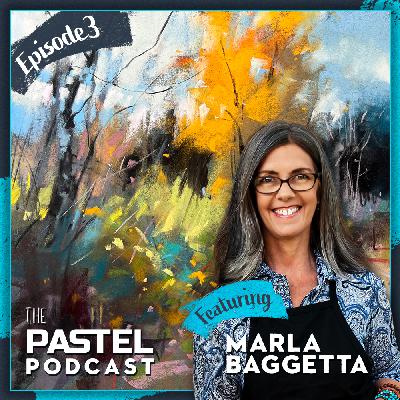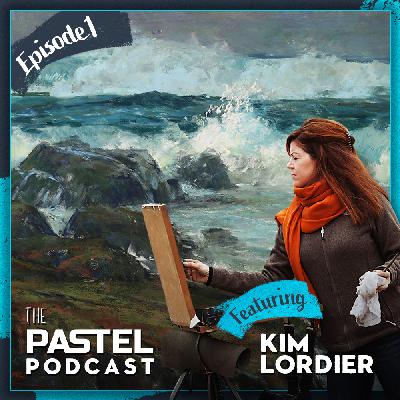The Pastel Podcast Episode 6: Pamela Comfort
Description
In Episode 6 of The Pastel Podcast we sat down with Pamela Comfort — pastel artist and president of the Pastel Society of the West Coast (PSWC) — to hear how she went from a 30-year career in education to leading one of the largest and most active pastel societies in the United States. Pamela’s story is equal parts curiosity, community-building, and practical insight for artists at every stage. Here’s a condensed, actionable recap of our conversation and what PSWC offers to pastelists everywhere.
How Pamela discovered pastels
Pamela’s pastel journey began in 2019 after retirement. While packing boxes from her education career she found oil pastels she’d used for leadership workshops and decided to “play around” with them. Curious and methodical by training, she dove into online research and workshops and quickly discovered soft (dry) pastels. What followed was a joyful plunge: ordering pastels and papers, setting up an easel, and learning by doing. Her experience is a great reminder that it’s never too late to start a new creative practice.
"I just started headlong into it... next thing you know, I'm buying the dry pastels. They're arriving in the mail one after another."
From volunteer to PSWC president
Pamela’s involvement with PSWC began through volunteering. Because of her decades in education — including connections to county superintendents and arts initiatives across California — she stepped in as a scholarship co-chair to help promote PSWC’s student scholarships. Her volunteer work opened doors: she met artists, learned organizational ropes, and was asked to take on more leadership roles, ultimately becoming PSWC president.
What the Pastel Society of the West Coast offers
PSWC is one of the largest pastel societies in the U.S., with hundreds of members and a broad slate of programs designed to support artists from beginners to award-winning professionals. Below are the core offerings Pamela described:
Workshops and demonstrations
- In-person workshops across Northern, Central and Southern California, often aligned with shows or festivals.
- Online Zoom demonstrations and modular workshops — for example, short Saturday-afternoon series (1–4 PM) to lower the commitment barrier.
- Guest instructors vary from local favorites to international artists, and PSWC sometimes offers member scholarships to attend workshops.
Shows and competitions
- 99 Voices : A prestigious traditional pastel exhibit (currently showing at the Hilbert Museum of California Art).
- MOOS : A members-only online show (convenient: no framing or shipping).
- Multimedia Show : A physical show where artists can break the usual pastel society rule — instead of the typical requirement that the final layer be at least 80% pastel, PSWC allows pieces with only 30–50% pastel in the final layer. This makes room for oil + pastel, collage + pastel, watercolor underpaintings with exposed layers, gouache, acrylic, inks and mixed-media techniques.
"In a regular pastel society show the top layer is supposed to be 80% dry or soft pastel. For our multimedia show the final layer is supposed to be only 30 to 50% pastel — it really has to be multimedia."
Challenges, magazine exposure, and guest blogs
- Regular themed challenges (10-day, 21-day, and others) that include educational primers, daily practice, and peer feedback.
- Selected works from challenges and regional activities are highlighted in PSWC’s beautiful print magazine — a tangible form of recognition for emerging artists who may not yet get into juried shows.
- Guest blog posts and archived interviews/demonstrations provide ongoing educational content on the PSWC website.
Scholarships
- Two scholarship tracks: high school seniors heading to college art programs, and college students pursuing art degrees. Recent awards have been $2,000 each.
- Member workshop scholarships are also offered periodically so artists can afford professional instruction.
Community, critique, and the power of honest feedback
One of the strongest benefits Pamela emphasized is community — a place where pastelists "speak the same language." PSWC encourages honest critique from peers and mentors, which helps artists grow faster than praise alone. Pamela noted that posting work among artist peers produces actionable feedback, versus general applause from friends and family which, while lovely, doesn’t push skill development.
"A good critique from someone you trust is one of the most powerful tools for elevating your skills to a new level."
Volunteering: small commitments, big rewards
PSWC faces the same volunteer and demographic challenges as many arts organizations: membership skews older, materials are expensive, and it can be hard to recruit younger volunteers. Pamela’s approach was practical — break volunteer roles into small, manageable jobs so more people can contribute without feeling overwhelmed.
- Regional reps : Low-pressure role. Do what you already enjoy — organize a paint-out, host a small group critique, or invite people to a museum show. PSWC supports reps with publicity, swag, and no strict meeting requirements.
- Remote board : PSWC board members live across the U.S. and internationally, so meetings and programming run online to accommodate everyone.
"Volunteer. It's not only good for them, it's good for you and your soul."
Membership levels and recognition
PSWC, like many societies, has tiered membership status (general, signature, distinguished pastelist, and pastel laureate). Artists earn points toward higher levels by being accepted into shows, earning awards, and contributing to the community. These credentials (and corresponding initials) are recognized in the pastel world and can help artists gain visibility and professional credibility.
Where PSWC is headed
PSWC is continually evolving. Right now 99 Voices is on view at the Hilbert Museum through the end of November. Pamela hinted that 2026 — the Year of the Fire Horse — will be a time of change and "rocking and rolling" for the society. Expect more hybrid programming, refined member benefits, and renewed efforts to connect with other society presidents for shared learning.
Final thoughts and how to get involved
PSWC offers workshops, shows (traditional and multimedia), challenges, scholarships, a print magazine, guest blogs, and regular online programming. Whether you’re a beginner buying your first soft pastels or a seasoned award-winner looking to experiment with mixed media, there’s a place to learn and be seen.
If you’re inspired to join or support the pastel community:
- Visit the Pastel Society of the West Coast website to explore membership, programs, archives, and upcoming events.
- Consider volunteering in a small role — regional rep, event helper, or online content contributor — to build relationships and develop your practice.
- Try a PSWC challenge to jumpstart daily practice and possibly see your work in the magazine.
"Art makes people happy and we need more happy people in this world."
Thanks to Pamela Comfort for her leadership and to everyone in the pastel community who teaches, critiques, volunteers, and paints. If you want to explore more, check out PSWC programs and consider joining the movement — there’s a next step ready for every artist.

